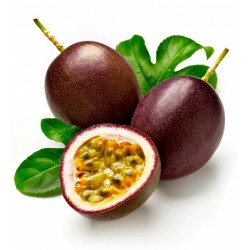Menu
-
MenuVissza
- Home
-
Kategóriák
-
-
Kategóriák
-
Zöldségmagok
-
Fajták országonként
- Fajták Örményország
- Fajták BiH
- Fajták Horvátországból
- Fajták Franciaországból
- Varieties from Germany
- Varieties from Greece
- Varieties from Hungary
- Fajták India
- Varieties from Italy
- Fajták Japánból
- Fajták Észak-Macedónia
- Varieties from Peru
- Varieties from Russia
- Varieties from Serbia
- Szlovéniából származó fajták
- Varieties from Spain
- Varieties from Thailand
- Fajták Törökország
- Varieties from USA
- Paradicsommag
- Kukoricamag
- Tök család magjai
- Babcsalád
- Uborka mag
- Paprikamag
- Sárgarépa család
- Hagyma család
- Saláta magok
- Burgonya család
- Káposzta család
- Retekmag
- Cékla család
- Görögdinnye magok
- Dinnye magok
- Karfiolmag
- Napraforgó család
-
Fajták országonként
- Gyümölcsmag
- Chili paprika magok
- Gyógynövénymagok
- Hegymászó növények magjai
- Fák - cserje - magok
- Pálma mag
- Díszes fűmagok
- Dohánymagok
-
Zöldségmagok
-
-
-
-
- ÚJ TERMÉKEK
- Fiók létrehozása
- Szállítás - fizetés
- FAQ
Last Product Reviews
Out of the two seeds, one germinated and the other one was dead and floatin...
By
 Riikka H on 07/03/2024
Riikka H on 07/03/2024
Verified Purchase
170 termék található.
61-75 / 170 elem mutatása

Szerbiából származó fajta

Garden Sunflower Seeds...
Ár
1,95 €
(SKU: P 13)
Seeds Gallery EU,
5/
5
<!DOCTYPE html>
<html>
<head>
<meta http-equiv="Content-Type" content="text/html; charset=UTF-8" />
</head>
<body>
<h2><strong>Garden Sunflower Seeds Multi-Color</strong></h2>
<h2><span style="color: #ff0000;"><strong>Price for Package of 10 seeds.</strong></span></h2>
<p>You have never seen a sunflower with such colors! Our multicolored sunflower! It's absolutely stunning in vases and in the garden. Variety of sunflower with small flowers (5 to 15 cm), with different colors (yellow, brown, orange, lemon yellow, ...) giving many flowers, 15 per plant, but which do not all bloom at the same time, which allows having flowers for about a month from the beginning to the end of flowering.</p>
<p>The plants are well-branched for cutting and are pollen-free so that they do not stain your furniture. Grow in average well-drained garden soil in full sun. Grow up to 2 meters tall, so choose the right place so as not to shade other sun-loving plants.</p>
<p>Adapts quite well on any type of soil</p>
<p>Small advice on cultivation: Maximum sunshine, loose soil, fertilizer of your choice (mineral fertilizer, nettle manure, compost, etc.)</p>
<p>g plants.</p>
</body>
</html>
P 13


A növény ellenáll a hidegnek és a fagynak
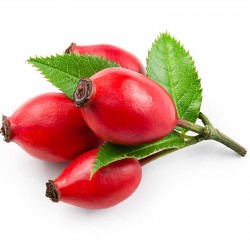
Rose Hip Seeds - Rose Haw -...
Ár
2,15 €
(SKU: MHS 122)
Seeds Gallery EU,
5/
5
<div class=""rte"">
<h2><strong>Rose Hip Seeds - Rose Haw - Rose Hep (Rosa canina)</strong></h2>
<h2><span style="color: #ff0000;"><strong>Price for Package of 1g (65+-) seeds.</strong></span></h2>
<div>The rose hip, also known as rose haw or rose hep, is the fruit of the rose plant, that typically is red-to-orange, but ranges from dark purple to black in some species. Rose hips begin to form after successful pollination of flowers in spring or early summer, and ripen in late summer through autumn.</div>
<p><strong>Usage</strong></p>
<p>Rose hips are used for tisanes, jam, jelly, syrup, soup, beverages, pies, bread, wine, and marmalade. They can also be eaten raw, like a berry, if care is used to avoid the hairs inside the fruit.</p>
<p>A few rose species are sometimes grown for the ornamental value of their hips, such as Rosa moyesii, which has prominent large red bottle-shaped fruits.</p>
<p>Rose hips have recently[when?] become popular as a healthy treat for pet chinchillas and guinea pigs. These small rodents are unable to manufacture their own vitamin C and are unable to digest many vitamin-C rich foods. Rose hips provide a sugarless, safe way to increase their vitamin C intake.</p>
<p>Rose hips are also fed to horses. The dried and powdered form can be fed at a maximum of 1 tablespoon per day to improve coat condition and new hoof growth.</p>
<p>The fine hairs found inside rose hips are used as itching powder. Dried rose hips are also sold for primitive crafts and home fragrance purposes.</p>
<p>Rose hips were used in many food preparations by the indigenous peoples of the Americas.</p>
<p> Rose hips can be used to make Palinka, a traditional Hungarian alcoholic beverage. They are also the central ingredient of Cockta, the fruity-tasting national soft drink of Slovenia.</p>
<p>In his book Stalking the Faraway Places, wild foods enthusiast Euell Gibbons recommended stuffed rose hips made by slicing a large hip in half, removing the seeds and inserting a wild raspberry.</p>
<p>Rose hips are commonly used as a tisane, often blended with hibiscus, and also as an oil. They can also be used to make jam, jelly, marmalade, and rose hip wine. Rose hip soup, "nyponsoppa", is especially popular in Sweden. Rhodomel, a type of mead, is made with rose hips.</p>
<p><strong>Medical uses</strong></p>
<p>Rose hips are particularly high in vitamin C content, one of the richest plant sources available. However, RP-HPLC assays of fresh rose hips and several commercially available products revealed a wide range of L-ascorbic acid content, ranging from 0.03 to 1.3%.[2] Rose hips of some species, especially Rosa canina (Dog Rose) and R. majalis, have been used as a source of vitamin C. During World War II, the people of Britain were encouraged through letters to The Times newspaper, articles in the British Medical Journal, and pamphlets produced by Claire Loewenfeld, a dietitian working for Great Ormond Street Hospital for Sick Children, to gather wild-grown rose hips and to make a vitamin C syrup for children. This was because German submarines were sinking many commercial ships: citrus fruits from the tropics were very difficult to import.</p>
<p>Rose hips contain plenty of lycopene, an important and strong antioxidant that prevents oxidation of low density lipoprotein (LDL) as well as of many cellular membranes.[3] Lycopene in rose hips differs more in its isomer distribution than in other sources (tomatoes, pink grapefruit).[citation needed]</p>
<p>Rose hips also contain some vitamin A and B, essential fatty acids, and antioxidant flavonoids.</p>
<p>A study of a rose hip preparation for treating rheumatoid arthritis concluded that there was a benefit, apparently due to both anti-inflammatory and anti-oxidant effects.</p>
<p>Rose hips are used to help prevent colds and influenza.</p>
<p><strong>Propagation</strong></p>
<p>Roses are propagated from hips by removing the achenes that contain the seeds from the hypanthium (the outer coating) and sowing just beneath the surface of the soil. The seeds can take many months to germinate. Most species require chilling (stratification), with some such as Rosa canina only germinating after two winter chill periods have occurred.</p>
</div><script src="//cdn.public.n1ed.com/G3OMDFLT/widgets.js"></script>
MHS 122 (1g)

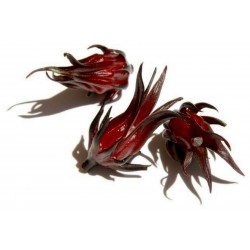
Roselle Seeds - Edible and...
Ár
2,75 €
(SKU: MHS 19)
Seeds Gallery EU,
5/
5
<div>
<h2><strong>Roselle Seeds - edible and tasty (Hibiscus sabdariffa)</strong></h2>
<h2><span style="color:#ff0000;"><strong>Price for Package of 10 seeds.</strong></span></h2>
<p>The roselle (Hibiscus sabdariffa) is a species of Hibiscus native to the Old World tropics, used for the production of bast fibre and as an infusion. It is an annual or perennial herb or woody-based subshrub, growing to 2–2.5 m (7–8 ft) tall. The leaves are deeply three- to five-lobed, 8–15 cm (3–6 in) long, arranged alternately on the stems.</p>
</div>
<p>The flowers are 8–10 cm (3–4 in) in diameter, white to pale yellow with a dark red spot at the base of each petal, and have a stout fleshy calyx at the base, 1–2 cm (0.39–0.79 in) wide, enlarging to 3–3.5 cm (1.2–1.4 in), fleshy and bright red as the fruit matures. It takes about six months to mature.</p>
<p><span><strong>Names</strong></span></p>
<p><span>The roselle is known as the rosella or rosella fruit in Australia. It is also known as 'Belchanda' among Nepalese, Tengamora among Assamese and "mwitha" among Bodo tribals in Assam, চুকর Chukor in Bengali, Gongura in Telugu, Pundi in Kannada, Ambadi in Marathi, LalChatni or Kutrum in Mithila] Mathipuli in Kerala, chin baung in Burma, กระเจี๊ยบแดง KraJiabDaeng in Thailand, ສົ້ມ ພໍດີ som phor dee in Lao PDR, bissap in Senegal, Guinea Bissau, Mali, Burkina Faso, Ghana, Benin and Niger, the Congo and France, dah or dah bleni in other parts of Mali, wonjo in the Gambia, zobo in western Nigeria (the Yorubas in Nigeria call the white variety Isapa (pronounced Ishapa)), Zoborodo in Northern Nigeria, Chaye-Torosh in Iran, karkade (كركديه; Arabic pronunciation: [ˈkarkade])[dubious – discuss] in Egypt, Saudi Arabia, and Sudan, omutete in Namibia, sorrel in the Caribbean and in Latin America, Flor de Jamaica in Mexico, Saril in Panama, grosella in Paraguay and vinagreira, caruru-azedo or quiabo-roxo in Brazil. Rosela in Indonesia, asam belanda[1] in Malaysia. In Chinese it is 洛神花 (Luo Shen Hua) . In Zambia the plant is called lumanda in ciBemba, katolo in kiKaonde, or wusi in chiLunda.</span></p>
<p><span><strong>Uses</strong></span></p>
<p><span>The plant is considered to have antihypertensive properties. In some places, the plant is primarily cultivated for the production of bast fibre from the stem of the plant. The fibre may be used as a substitute for jute in making burlap.[2] Hibiscus, specifically Roselle, has been used in folk medicine as a diuretic, mild laxative, and treatment for cardiac and nerve diseases and cancer.[3]</span></p>
<p><span>The red calyces of the plant are increasingly exported to America and Europe, where they are used as food colourings. Germany is the main importer. It can also be found in markets (as flowers or syrup) in some places such as France, where there are Senegalese immigrant communities. The green leaves are used like a spicy version of spinach. They give flavour to the Senegalese fish and rice dish thiéboudieune. Proper records are not kept, but the Senegalese government estimates national production and consumption at 700 t (770 short tons) per year. Also in Burma their green leaves are the main ingredient in making chin baung kyaw curry.</span></p>
<p><span>In East Africa, the calyx infusion, called "Sudan tea", is taken to relieve coughs. Roselle juice, with salt, pepper, asafoetida and molasses, is taken as a remedy for biliousness.</span></p>
<p><span>The heated leaves are applied to cracks in the feet and on boils and ulcers to speed maturation. A lotion made from leaves is used on sores and wounds. The seeds are said to be diuretic and tonic in action and the brownish-yellow seed oil is claimed to heal sores on camels. In India, a decoction of the seeds is given to relieve dysuria, strangury and mild cases of dyspepsia. Brazilians attribute stomachic, emollient and resolutive properties to the bitter roots.[4]</span></p>
<p><span><strong>Leafy vegetable/Greens</strong></span></p>
<p><span>In Andhra cuisine, Hibiscus cannabinus, called Gongura, is extensively used. The leaves are steamed along with lentils and cooked with Dal. The other unique dish prepared is gongura pachadi, it is prepared by mixing fried leaves with spices and made into a Gongura Pacchadi, the most famous dish of Andhra cuisine and is often described as king of all foods of Andhra ethnics(andhrulu)</span></p>
<p><span>In Burmese cuisine, called chin baung ywet (lit. sour leaf), the roselle is widely used and considered an affordable vegetable for the population. It is perhaps the most widely eaten and popular vegetable in Burma.[5] The leaves are fried with garlic, dried or fresh prawns and green chili or cooked with fish. A light soup made from roselle leaves and dried prawn stock is also a popular dish.</span></p>
<p><span><strong>Beverage</strong></span></p>
<p><span>Cuisine: Among the Bodo tribals of Bodoland, Assam (India) the leaves of both hibiscus sabdariffa and hibiscus cannabinus are cooked along with chicken, fish or pork, one of their traditional cuisines</span></p>
<p><span>In the Caribbean sorrel drink is made from sepals of the roselle. In Malaysia, roselle calyces are harvested fresh to produce pro-health drink due to high contents of vitamin C and anthocyanins. In Mexico, 'agua de Flor de Jamaica' (water flavored with roselle) frequently called "agua de Jamaica" is most often homemade. Also, since many untrained consumers mistake the calyces of the plant to be dried flowers, it is widely, but erroneously, believed that the drink is made from the flowers of the non-existent "Jamaica plant". It is prepared by boiling dried sepals and calyces of the Sorrel/Flower of Jamaica plant in water for 8 to 10 minutes (or until the water turns red), then adding sugar. It is often served chilled. This is also done in Saint Kitts and Nevis, Guyana, Antigua, Barbados, St. Lucia, Dominica, Grenada, Jamaica and Trinidad and Tobago where it is called 'sorrel'. The drink is one of several inexpensive beverages (aguas frescas) commonly consumed in Mexico and Central America, and they are typically made from fresh fruits, juices or extracts. A similar thing is done in Jamaica but additional flavor is added by brewing the tea with ginger and adding rum. It is a popular drink of the country at Christmas time. It is also very popular in Trinidad & Tobago but cinnamon, cloves and bay leaves are preferred to ginger. In Mali, Senegal, The Gambia, Burkina Faso and Benin calyces are used to prepare cold, sweet drinks popular in social events, often mixed with mint leaves, dissolved menthol candy, and/or various fruit flavors. The Middle Eastern and Sudanese drink "Karkade"(كركديه) is a cold drink made by soaking the dried Karkade flowers in cold water over night in a refrigerator with sugar and some lemon or lime juice added.It is then consumed with or without ice cubes after the flowers have been strained.In Lebanon, sometimes toasted pine nuts are tossed into the drink.</span></p>
<p><span>With the advent in the U.S. of interest in south-of-the-border cuisine, the calyces are sold in bags usually labeled "Flor de Jamaica" and have long been available in health food stores in the U.S. for making a tea that is high in vitamin C. This drink is particularly good for people who have a tendency, temporary or otherwise, toward water retention: it is a mild diuretic.</span></p>
<p><span>In addition to being a popular homemade drink, Jarritos, a popular brand of Mexican soft drinks, makes a Flor de Jamaica flavored carbonated beverage. Imported Jarritos can be readily found in the U.S.</span></p>
<p><span>In the UK the dried calyces and ready-made sorrel syrup are widely and cheaply available in Caribbean and Asian grocers. The fresh calyces are imported mainly during December and January in order to make Christmas and New Year infusions, which are often made into cocktails with additional rum. They are very perishable, rapidly developing fungal rot, and need to be used soon after purchase – unlike the dried product, which has a long shelf-life.</span></p>
<p><span>In Africa, especially the Sahel, roselle is commonly used to make a sugary herbal tea that is commonly sold on the street. The dried flowers can be found in every market. Roselle tea is also quite common in Italy where it spread during the first decades of the 20th century as a typical product of the Italian colonies. The Carib Brewery Trinidad Limited, a Trinidad and Tobago brewery, produces a Shandy Sorrel in which the tea is combined with beer.</span></p>
<p><span>In Thailand, Roselle is generally drunk as a cool drink,[6] but also as a tea, believed to also reduce cholesterol. It can also be made into a wine.</span></p>
<p><span>Hibiscus flowers are commonly found in commercial herbal teas, especially teas advertised as berry-flavoured, as they give a bright red colouring to the drink.</span></p>
<p><span>Rosella flowers are sold as Wild Hibiscus flowers in syrup in Australia as a gourmet product. Recipes include filling them with goats cheese, serving them on baguette slices baked with brie, & placing one plus a little syrup, in a champagne flute before adding the champagne when the bubbles cause the flower to open.</span></p>
<p><span><strong>Jam and preserves</strong></span></p>
<p><span>In Nigeria, rosella jam has been made since Colonial times and is still sold regularly at community fetes and charity stalls. It is similar in flavour to plum jam, although more acidic. It differs from other jams in that the pectin is obtained from boiling the interior buds of the rosella flowers. It is thus possible to make rosella jam with nothing but rosella buds and sugar. Roselle is also used in Nigeria to make a refreshing drink known as Zobo.</span></p>
<p><span>In Burma, the buds of the roselle are made into 'preserved fruits' or jams. Depending on the method and the preference, the seeds are either removed or included. The jams, made from roselle buds and sugar, are red and tangy.</span></p>
<p><span>"Sorrel jelly" is manufactured in Trinidad.</span></p>
<p><span>Rosella Jam is also made in Queensland, Australia as a home-made or speciality product sold at fetes and other community events.[7]</span></p>
<p><span><strong>Medicinal uses</strong></span></p>
<p><span>Many parts of the plant are also claimed to have various medicinal values. They have been used for such purposes ranging from Mexico through Africa and India to Thailand. Roselle is associated with traditional medicine and is reported to be used as treatment for several diseases such as hypertension and urinary tract infections.[8]</span></p>
<p><span>Although Roselle has well documented hypotensive effects,[9] there is currently insufficient evidence to support the benefit of Roselle for either controlling or lowering blood pressure due to a lack of well designed studies that measure the efficacy of Roselle on patients with hypertension.[10]</span></p>
<p><span>A double blind, placebo controlled, randomized trial was conducted to determine the effect of Roselle leaf extract on a group of 60 subjects with serum LDL values in the range of 130-190 ml/dl (<130 ml/dl is a goal value for most patients[11]) and no history of coronary heart disease. The experimental group received 1g of Roselle leaf extract while the placebo group received a similar amount of maltodextrin in addition to dietary and physical activity advice. Both groups had decreases in body weight, LDL cholesterol, and triglycerides that can likely be attributed to the dietary and physical activity advice. At a dose of 1g/day, Roselle leaf extract did not appear to have a blood lipid lowering effect.[12]</span></p>
<p><span>Hibiscus sabdariffa has shown in vitro antimicrobial activity against E. coli.[13] A recent review stated that specific extracts of H. sabdariffa exhibit activities against atherosclerosis, liver disease, cancer, diabetes and other metabolic syndromes.</span></p>
<p><span><strong>Phytochemicals</strong></span></p>
<p><span>The plants are rich in anthocyanins, as well as protocatechuic acid. The dried calyces contain the flavonoids gossypetin, hibiscetine and sabdaretine. The major pigment, formerly reported as hibiscin, has been identified as daphniphylline. Small amounts of myrtillin (delphinidin 3-monoglucoside), Chrysanthenin (cyanidin 3-monoglucoside), and delphinidin are also present. Roselle seeds are a good source of lipid-soluble antioxidants, particularly gamma-tocopherol.[15]</span></p>
<p> </p>
<p><span><strong>Production</strong></span></p>
<p><span>China and Thailand are the largest producers and control much of the world supply. Thailand invested heavily in roselle production and their product is of superior quality, whereas China's product, with less stringent quality control practices, is less reliable and reputable. The world's best roselle comes from the Sudan, but the quantity is low and poor processing hampers quality. Mexico, Egypt, Senegal, Tanzania, Mali and Jamaica are also important suppliers but production is mostly used domestically.[16]</span></p>
<p><span>In the Indian subcontinent (especially in the Ganges Delta region), roselle is cultivated for vegetable fibres. Roselle is called meśta (or meshta, the ś indicating an sh sound) in the region. Most of its fibres are locally consumed. However, the fibre (as well as cuttings or butts) from the roselle plant has great demand in various natural fibre using industries.</span></p>
<p><span>Roselle is a relatively new crop to create an industry in Malaysia. It was introduced in early 1990s and its commercial planting was first promoted in 1993 by the Department of Agriculture in Terengganu. The planted acreage was 12.8 ha (30 acres) in 1993, but had steadily increased to peak at 506 ha (1,000 acres) in 2000. The planted area is now less than 150 ha (400 acres) annually, planted with two main varieties.[citation needed] Terengganu state used to be the first and the largest producer, but now the production has spread more to other states. Despite the dwindling hectarage over the past decade or so, roselle is becoming increasingly known to the general population as an important pro-health drink in the country. To a small extent, the calyces are also processed into sweet pickle, jelly and jam. jimmon rubillos</span></p>
<p><span><strong>Crop research</strong></span></p>
<p><span>In the initial years, limited research work were conducted by University Malaya (UM) and Malaysian Agricultural Research and Development Institute (MARDI). Research work at Universiti Kebangsaan Malaysia (UKM) was initiated in 1999. In many respect, the amount of research work is still considered meagre in supporting a growing roselle industry in Malaysia.</span></p>
<p><span>Crop genetic resources & improvement[edit]</span></p>
<p><span>Genetic variation is important for plant breeders to increase the crop productivity. Being an introduced species in Malaysia, there is a very limited number of germplasm accessions available for breeding. At present, UKM maintains a working germplasm collection, and also conducts agronomic research and crop improvement.</span></p>
<p><span>Mutation breeding[edit]</span></p>
<p><span>Genetic variation is important for plant breeders to increase its productivity. Being an introduced crop species in Malaysia, there is a limited number of germplasm accessions available for breeding. Furthermore, conventional hybridization is difficult to carry out in roselle due to its cleistogamous nature of reproduction. Because of this, a mutation breeding programme was initiated to generate new genetic variability.[17] The use of induced mutations for its improvement was initiated in 1999 in cooperation with MINT (now called Malaysian Nuclear Agency), and has produced some promising breeding lines. Roselle is a tetraploid species; thus, segregating populations require longer time to achieve fixation as compared to diploid species. In April 2009, UKM launched three new varieties named UKMR-1, UKMR-2 and UKMR-3, respectively. These three new varieties were developed using variety Arab as the parent variety in a mutation breeding programme which started in 2006.</span></p>
<p><span><strong>Natural outcrossing under local conditions</strong></span></p>
<p><span>A study was conducted to estimate the amount of outcrossing under local conditions in Malaysia. It was found that outcrossing occurred at a very low rate of about 0.02%. However, this rate is much lower in comparison to estimates of natural cross-pollination of between 0.20% and 0.68% as reported in Jamaica.</span></p>
<p><span><strong>Source: Wikipedia</strong></span></p>
MHS 19


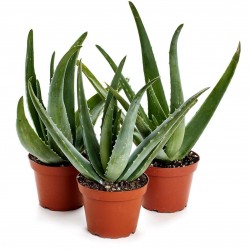
Aloe vera Seeds (Aloe...
Ár
4,00 €
(SKU: CT 24)
Seeds Gallery EU,
5/
5
<div id="idTab1" class="rte">
<h2 id="short_description_content"><strong>Aloe vera Seeds (Aloe barbadensis)</strong></h2>
<h2><span style="color:#ff0000;"><strong>Price for Package of 5 seeds.</strong></span></h2>
<p>Aloe vera is a succulent plant species that is found only in cultivation, having no naturally occurring populations, although closely related aloes do occur in northern Africa. The species is frequently cited as being used in herbal medicine since the beginning of the first century AD. Extracts from A. vera are widely used in the cosmetics and alternative medicine industries, being marketed as variously having rejuvenating, healing, or soothing properties. There is, however, little scientific evidence of the effectiveness or safety of Aloe vera extracts for either cosmetic or medicinal purposes, and what positive evidence is available is frequently contradicted by other studies.</p>
<p><strong>Description</strong></p>
<p>Aloe vera is a stemless or very short-stemmed succulent plant growing to 60–100 cm (24–39 in) tall, spreading by offsets. The leaves are thick and fleshy, green to grey-green, with some varieties showing white flecks on their upper and lower stem surfaces.[6] The margin of the leaf is serrated and has small white teeth. The flowers are produced in summer on a spike up to 90 cm (35 in) tall, each flower being pendulous, with a yellow tubular corolla 2–3 cm (0.8–1.2 in) long.[6][7] Like other Aloe species, Aloe vera forms arbuscular mycorrhiza, a symbiosis that allows the plant better access to mineral nutrients in soil.</p>
<p>Aloe vera leaves contain phytochemicals under study for possible bioactivity, such as acetylated mannans, polymannans, anthraquinone C-glycosides, anthrones, anthraquinones, such as emodin, and various lectins.</p>
<p><strong>Taxonomy and etymology</strong></p>
<p>The species has a number of synonyms: A. barbadensis Mill., Aloe indica Royle, Aloe perfoliata L. var. vera and A. vulgaris Lam.[11][12] Common names include Chinese Aloe, Indian Aloe, True Aloe, Barbados Aloe, Burn Aloe, First Aid Plant. The species epithet vera means "true" or "genuine". Some literature identifies the white-spotted form of Aloe vera as Aloe vera var. chinensis, however, the species varies widely with regard to leaf spots[1] and it has been suggested that the spotted form of Aloe vera may be conspecific with A. massawana.[19] The species was first described by Carl Linnaeus in 1753 as Aloe perfoliata var. vera,[20] and was described again in 1768 by Nicolaas Laurens Burman as Aloe vera in Flora Indica on 6 April and by Philip Miller as Aloe barbadensis some ten days after Burman in the Gardener's Dictionary.</p>
<p>Techniques based on DNA comparison suggest Aloe vera is relatively closely related to Aloe perryi, a species endemic to Yemen.[22] Similar techniques, using chloroplast DNA sequence comparison and ISSR profiling have also suggested it is closely related to Aloe forbesii, Aloe inermis, Aloe scobinifolia, Aloe sinkatana, and Aloe striata.[23] With the exception of the South African species A. striata, these Aloe species are native to Socotra (Yemen), Somalia, and Sudan.[23] The lack of obvious natural populations of the species has led some authors to suggest Aloe vera may be of hybrid origin.</p>
<p><strong>Distribution</strong></p>
<p>The natural range of A. vera is unclear, as the species has been widely cultivated throughout the world. Naturalised stands of the species occur in the southern half of the Arabian Peninsula, through North Africa (Morocco, Mauritania, Egypt), as well as Sudan and neighbouring countries, along with the Canary, Cape Verde, and Madeira Islands.[11] This distribution is somewhat similar to the one of Euphorbia balsamifera, Pistacia atlantica, and a few others, suggesting that a dry sclerophyll forest once covered large areas, but has been dramatically reduced due to desertification in the Sahara, leaving these few patches isolated. Several closely related (or sometimes identical) species can be found on the two extreme sides of the Sahara: dragon trees (Dracaena) and Aeonium being two of the most representative examples.</p>
<p>The species was introduced to China and various parts of southern Europe in the 17th century.[25] The species is widely naturalised elsewhere, occurring in temperate and tropical regions of Australia, Barbados, Belize, Nigeria, Paraguay and the United States[1][26] The actual species' distribution has been suggested to be the result of human cultivation.</p>
<p><strong>Cultivation</strong></p>
<p>Aloe vera has been widely grown as an ornamental plant. The species is popular with modern gardeners as a putatively medicinal plant and for its interesting flowers, form, and succulence. This succulence enables the species to survive in areas of low natural rainfall, making it ideal for rockeries and other low water-use gardens.[6] The species is hardy in zones 8–11, although it is intolerant of very heavy frost or snow.[7][27] The species is relatively resistant to most insect pests, though spider mites, mealy bugs, scale insects, and aphid species may cause a decline in plant health.[28][29] In pots, the species requires well-drained, sandy potting soil and bright, sunny conditions; however, Aloe plants can burn under too much sun or shrivel when the pot does not drain the rain. The use of a good-quality commercial propagation mix or packaged "cacti and succulent mix" is recommended, as they allow good drainage.[30] Terra cotta pots are preferable as they are porous.[30] Potted plants should be allowed to completely dry prior to rewatering. When potted, aloes become crowded with "pups" growing from the sides of the "mother plant", they should be divided and repotted to allow room for further growth and help prevent pest infestations. During winter, Aloe vera may become dormant, during which little moisture is required. In areas that receive frost or snow, the species is best kept indoors or in heated glasshouses.[7] Large-scale agricultural production of Aloe vera is undertaken in Australia,[31] Bangladesh, Cuba,[32] the Dominican Republic, China, Mexico,[33] India,[34] Jamaica,[35] Kenya, Tanzania and South Africa,[36] along with the USA[37] to supply the cosmetics industry with Aloe vera gel.</p>
<p>This plant has gained the Royal Horticultural Society's Award of Garden Merit.</p>
<p><strong>Uses</strong></p>
<p>Preparations made from Aloe vera are often referred to as "aloe vera".[39] Scientific evidence for the cosmetic and therapeutic effectiveness of aloe vera is limited and when present is frequently contradictory.[2][3] Despite this, the cosmetic and alternative medicine industries regularly make claims regarding the soothing, moisturizing, and healing properties of aloe vera [4][40] commercially advertised mainly for skin conditions such as sunburns, cold sores and frostbite. Aloe vera gel is also used commercially as an ingredient in yogurts, beverages, and some desserts;[41][42][43] although at certain doses, its toxic properties could be severe whether ingested or topically applied.[44] The same is true for aloe latex, which was taken orally for conditions ranging from glaucoma to multiple sclerosis until the FDA required manufacturers to discontinue its use.[45] Other uses for extracts of Aloe vera include the dilution of semen for the artificial fertilization of sheep,[46] as a fresh food preservative,[47] or for water conservation in small farms.[48] It has also been suggested that biofuels could be obtained from Aloe vera seeds.[49] Aloe is also used as a food substance, possibly for its gelling properties.</p>
<p><strong>Traditional medicine</strong></p>
<p>Early records of Aloe vera use appear in the Ebers Papyrus from the 16th century BC,[16] in both Dioscorides' De Materia Medica and Pliny the Elder's Natural History written in the mid-first century AD[16] along with the Juliana Anicia Codex produced in 512 AD.[41] The species is used widely in the traditional herbal medicine of many countries.[4] Aloe vera, called kathalai in Ayurvedic medicine, is used as a multipurpose skin treatment. This may be partly due to the presence of saponin, a chemical compound that acts as an antimicrobial agent.</p>
<p><strong>Dietary supplement</strong></p>
<p>Aloin, a compound found in the exudate of some Aloe species, was the common ingredient in over-the-counter (OTC) laxative products in the United States prior to 2003, when the Food and Drug Administration ruled that aloin was a class III ingredient, thereby banning its use.[51] Aloe vera has potential toxicity, with side effects occurring at some dose levels both when ingested or applied topically.[44] Although toxicity may be less when aloin is removed by processing, Aloe vera that contains aloin in excess amounts may induce side effects.[4][5][52] A two-year National Toxicology Program (NTP) study on oral consumption of nondecolorized whole leaf extract of Aloe vera found evidence of carcinogenic activity in male and female rats. The NTP says more information is needed to determine the potential risks to humans.</p>
<p>Aloe vera juice is marketed to support the health of the digestive system, but there is neither scientific evidence nor regulatory approval to support this claim.[56] The extracts and quantities typically used for such purposes appear to be dose-dependent for toxic effects.</p>
<p><strong>Commodities</strong></p>
<p>Aloe vera is used on facial tissues where it is promoted as a moisturiser and/or anti-irritant to reduce chafing of the nose. Cosmetic companies commonly add sap or other derivatives from Aloe vera to products such as makeup, tissues, moisturizers, soaps, sunscreens, incense, shaving cream, or shampoos.[41] A review of academic literature notes that its inclusion in many hygiene products is due to its "moisturizing emollient effect".</p>
<p><strong>Toxicity</strong></p>
<p>In 2011, the NTP carried out a series of short- and long-term carcinogenicity studies of a nondecolorized whole leaf extract of Aloe barbadensis miller (Aloe vera) in rats and mice, in which the extracts were fed to the rodents in drinking water.[4] The studies found "clear evidence of carcinogenic activity" in the rats, but "no evidence of carcinogenic activity" in the mice. Both the mice and rats had increased amounts of noncancerous lesions in various tissues. The NTP believes further studies of oral preparations of aloe are important, as are studies of the oral exposure of humans to aloe; topical preparations are still considered safe.</p>
<p>Oral ingestion of Aloe vera may also cause diarrhea, which in turn can lead to electrolyte imbalance, kidney dysfunction, dry mouth, headache, and nausea, while topical application may induce contact dermatitis, erythema, or phototoxicity.</p>
<p><strong>Research into medical uses</strong></p>
<p>Two 2009 reviews of clinical studies determined that all were too small and faulty to allow strong conclusions to be drawn from them, but concluded, "there is some preliminary evidence to suggest that oral administration of aloe vera might be effective in reducing blood glucose in diabetic patients and in lowering blood lipid levels in hyperlipidaemia. The topical application of aloe vera does not seem to prevent radiation-induced skin damage. It might be useful as a treatment for genital herpes and psoriasis. The evidence regarding wound healing is contradictory. More and better trial data are needed to define the clinical effectiveness of this popular herbal remedy more precisely." [5][58] One of the reviews found that Aloe has not been proven to offer protection for humans from sunburn, suntan, or other damage from the sun.</p>
<p>A 2007 review of aloe vera's use in burns concluded, "cumulative evidence tends to support that aloe vera might be an effective interventions used in burn wound healing for first- to second-degree burns. Further, well-designed trials with sufficient details of the contents of aloe vera products should be carried out to determine the effectiveness of aloe vera.[59] Topical application of aloe vera may also be effective for genital herpes and psoriasis.</p>
<div>
<table cellspacing="0" cellpadding="0" border="1"><tbody><tr><td colspan="2" width="100%" valign="top">
<p align="center"><span style="color:#008000;"><strong>Sowing Instructions</strong></span></p>
</td>
</tr><tr><td valign="top" nowrap="nowrap">
<p align="center"><span style="color:#008000;"><strong>Propagation:</strong></span></p>
</td>
<td valign="top">
<p align="center"><span style="color:#008000;">Seeds</span></p>
</td>
</tr><tr><td valign="top" nowrap="nowrap">
<p align="center"><span style="color:#008000;"><strong>Pretreat:</strong></span></p>
</td>
<td valign="top">
<p align="center"><span style="color:#008000;">0</span></p>
</td>
</tr><tr><td valign="top" nowrap="nowrap">
<p align="center"><span style="color:#008000;"><strong>Stratification:</strong></span></p>
</td>
<td valign="top">
<p align="center"><span style="color:#008000;">0</span></p>
</td>
</tr><tr><td valign="top" nowrap="nowrap">
<p align="center"><span style="color:#008000;"><strong>Sowing Time:</strong></span></p>
</td>
<td valign="top">
<p align="center"><span style="color:#008000;">all year round</span></p>
</td>
</tr><tr><td valign="top" nowrap="nowrap">
<p align="center"><span style="color:#008000;"><strong>Sowing Depth:</strong></span></p>
</td>
<td valign="top">
<p align="center"><span style="color:#008000;">Needs Light to germinate! Just sprinkle on the surface of the substrate + gently press</span></p>
</td>
</tr><tr><td valign="top" nowrap="nowrap">
<p align="center"><span style="color:#008000;"><strong>Sowing Mix:</strong></span></p>
</td>
<td valign="top">
<p align="center"><span style="color:#008000;">Coir or sowing mix + sand or perlite</span></p>
</td>
</tr><tr><td valign="top" nowrap="nowrap">
<p align="center"><span style="color:#008000;"><strong>Germination temperature:</strong></span></p>
</td>
<td valign="top">
<p align="center"><span style="color:#008000;">20-25°C</span></p>
</td>
</tr><tr><td valign="top" nowrap="nowrap">
<p align="center"><span style="color:#008000;"><strong>Location:</strong></span></p>
</td>
<td valign="top">
<p align="center"><span style="color:#008000;">bright + keep constantly moist not wet</span></p>
</td>
</tr><tr><td valign="top" nowrap="nowrap">
<p align="center"><span style="color:#008000;"><strong>Germination Time:</strong></span></p>
</td>
<td valign="top">
<p align="center"><span style="color:#008000;">1 - 8 weeks</span></p>
</td>
</tr><tr><td valign="top" nowrap="nowrap">
<p align="center"><span style="color:#008000;"><strong>Watering:</strong></span></p>
</td>
<td valign="top">
<p align="center"><span style="color:#008000;">Water regularly during the growing season</span></p>
</td>
</tr><tr><td valign="top" nowrap="nowrap"> </td>
<td valign="top">
<p align="center"><br /><span style="color:#008000;"><em>Copyright © 2012 Seeds Gallery - Saatgut Galerie - Galerija semena. </em><em>All Rights Reserved.</em></span></p>
</td>
</tr></tbody></table><p> </p>
</div>
</div>
CT 24 (5 S)

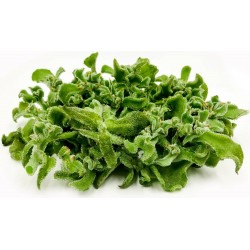
Jégnövény magjai...
Ár
1,50 €
(SKU: VE 131)
Seeds Gallery EU,
5/
5
<h2><strong>Jégnövény magjai (Mesembryanthemum crystallinum)</strong></h2>
<h2><span style="color: #fe0000;"><strong>Az ár a 10 vagy 25 magot tartalmazó csomagra vonatkozik.</strong></span></h2>
<div>A Jégnövényként ismert Mesembryanthemum crystallinum egy szép pozsgás, amely Dél-Afrikában őshonos. Sűrű talajtakaróként 1 méter szélesre és körülbelül 10 cm magasra nő.<br>Nagy, hólyagszerű sejtekkel borítják, amelyek vizet tárolnak, és a napon csillognak, ami fagyos megjelenést eredményez. A növény öregedésével a levelek kipirosodnak.<br><br>Az ehető zöld leveleket megfőzzük és zöldnek vesszük, vagy frissen sós köretnek használjuk. Fehér virágokat hoz. Általában homokos-sziklás tengerparti területeken nő.<br><br>A tengerparti területeken való túlélés érdekében a növénynek speciális mechanizmusa van a só felhalmozására, majd a környező talajba való kibocsátására.</div><script src="//cdn.public.n1ed.com/G3OMDFLT/widgets.js"></script>
VE 131 (10 S)

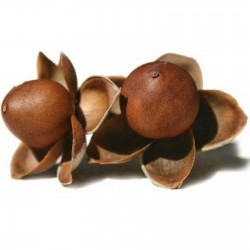
Hawaiian Baby Woodrose...
Ár
2,35 €
(SKU: T 25 (1g))
Seeds Gallery EU,
5/
5
<h2><strong>Hawaiian Baby Woodrose Seeds (Argyreia nervosa)</strong></h2>
<h2><span style="color: #ff0000;" class=""><strong>Price for Package of 1g (+-10) seeds.</strong></span></h2>
<p>Argyreia nervosa is a perennial climbing vine that is native to the Indian subcontinent and introduced to numerous areas worldwide, including Hawaii, Africa, and the Caribbean. Though it can be invasive, it is often prized for its aesthetic value. Common names include Hawaiian Baby Woodrose, Adhoguda अधोगुडा or Vidhara विधारा (Sanskrit), Elephant Creeper and Woolly Morning Glory. There are two botanical varieties: Argyreia nervosavar. nervosa described here, and Argyrea nervosa var. speciosa, a species used in ayurvedic medicine, but with little to no psychoactive value.</p>
<p>Hawaiian Baby Woodrose seeds may be consumed for their various ergoline alkaloids, such as Lysergic acid amide, which can produce psychedelic effects.</p>
<p><strong>History</strong></p>
<p>The plant is a rare example of a plant whose hallucinogenic properties were not recognized until recent times. While its cousins in the Convolvulaceae family, such as the Rivea corymbosa (Ololiuhqui) and Ipomoea tricolor (Tlitliltzin), were used in shamanic rituals of Latin America for centuries, the Hawaiian Baby Woodrose was not traditionally recognized as a hallucinogen. Its properties were first brought to attention in the 1960s, despite the fact that the chemical composition of its seeds is nearly identical to those of the two species mentioned above, and the seeds contain the highest concentration of psychoactive compounds in the entire family.</p>
<p><strong>Seeds</strong></p>
<p>In most countries, it is legal to purchase, sell or germinate Argyreia nervosa seeds, but they are generally unapproved for human consumption. Depending on the country, it may be illegal to buy seeds with the intention to consume them, and several countries have outlawed ergine-containing seeds altogether. In Australia, retailers are required to treat their seeds with chemicals to discourage consumption, and it is illegal to buy or possess untreated seeds.</p>
<p><strong>Extracted chemicals</strong></p>
<p>Extracting ergine from Argyreia speciosa seeds is illegal in the USA since it is a scheduled substance. It is classified as a schedule III depressant by the DEA, although the substance has hallucinogenic/psychedelic properties.</p>
<p>Extracts</p>
<p>In an animal model of ulcers in rats, large doses of the extract of Argyreia speciosa leaves (50, 100 and 200 mg/kg body weight) showed dose-dependent antiulcer activity and cured the Ulcers.</p><script src="//cdn.public.n1ed.com/G3OMDFLT/widgets.js"></script>
T 25 (1g)

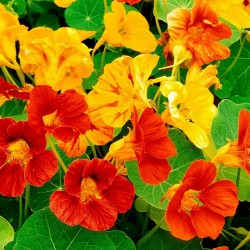
Indian cress or Monks cress...
Ár
2,00 €
(SKU: MHS 53)
Seeds Gallery EU,
5/
5
<h2><strong>Indian cress or Monks cress Seed – Edible</strong></h2>
<h2><span style="color:#ff0000;"><strong>Price for Package of 5 seeds.</strong></span></h2>
<p>Tropaeolum majus (garden nasturtium, Indian cress or monks cress) is a flowering plant in the family Tropaeolaceae, originating in the Andes from Bolivia north to Colombia. The species has become naturalized in parts of the United States (California, New York, Pennsylvania, New Hampshire, Massachusetts and Connecticut).[3] It is of cultivated, probably hybrid origin, with possible parent species including T. minus, T. moritzianum, T. peltophorum, and T. peregrinum.[4][5] It is not closely related to the genus Nasturtium (which includes watercress).</p>
<p><strong>Description</strong></p>
<p>It is a herbaceous annual plant with trailing stems growing to 1 metre (3 ft 3 in) long or more. The leaves are large, nearly circular, 3 to 15 centimetres (1.2 to 5.9 in) diameter, green to glaucous green above, paler below; they are peltate, with the 5–30 cm long petiole near the middle of the leaf, with several veins radiating to the smoothly rounded or slightly lobed margin. The flowers are 2.5–6 cm diameter, with five petals, eight stamens, and a 2.5–3 cm long nectar spur at the rear; they vary from yellow to orange to red, frilled and often darker at the base of the petals. The fruit is 2 cm broad, three-segmented, each segment with a single large seed 1–1.5 cm long.</p>
<p><strong>Das Elisabeth Linné-Phänomen</strong></p>
<p>Das Elisabeth Linné-Phänomen, or the Elizabeth Linnæus Phenomenon, is the name given to the phenomenon of "Flashing Flowers".[8] Especially at dusk, the orange flowers may appear to emit small "flashes". Once believed to be an electrical phenomenon, it is today thought to be an optical reaction in the human eye caused by the contrast between the orange flowers and the surrounding green. The phenomenon is named after Elisabeth Christina von Linné, one of Carl Linnaeus's daughters, who discovered it at age 19.</p>
<p><strong>Cultivation and uses</strong></p>
<p>It is widely cultivated, both as an ornamental plant and as a medicinal plant.</p>
<p>It is listed as invasive in several areas, including Hawaii, Lord Howe Island, New Zealand.</p>
<p><strong>Culinary</strong></p>
<p>All its parts are edible. The flower has most often been consumed, making for an especially ornamental salad ingredient; it has a slightly peppery taste reminiscent of watercress, and is also used in stir fry. The flowers contain about 130 mg vitamin C per 100 grams (3.5 oz),[10] about the same amount as is contained in parsley.[11] Moreover, they contain up to 45 mg of lutein per 100 gr,[12] which is the highest amount found in any edible plant. The unripe seed pods can be harvested and dropped into spiced vinegar to produce a condiment and garnish, sometimes used in place of capers.</p>
<p><strong>Ecology</strong></p>
<p>The garden nasturtium is used as a food plant by the larvae of some Lepidoptera species including the Dot Moth[14] and the Garden Carpet Moth.[15] A very common pest found on nasturtiums is the caterpillar of the Large White (Cabbage White) Butterfly.</p>
<p><strong>Companion plants</strong></p>
<p>Nasturtiums are also considered widely useful companion plants. They repel a great many cucurbit pests, like squash bugs, cucumber beetles, and several caterpillars. They have a similar range of benefits for brassica plants, especially broccoli and cauliflower. They also serve as a trap crop against black fly aphids. They also attract beneficial predatory insects.</p>
MHS 53


Óriás növény (óriás gyümölcsökkel)
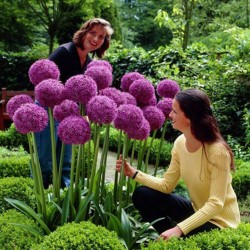
Giant Onion Seeds -...
Ár
1,95 €
(SKU: MHS 31)
Seeds Gallery EU,
5/
5
<h2><strong>Giant Onion Seeds - Globemaster (Allium Giganteum)</strong></h2>
<h2><span style="color:#ff0000;"><strong> Price for Package of 10 seeds.</strong></span></h2>
<p>These flowers are absolutely huge! They measure a whopping 6 - 8" wide! This variety of Allium makes an excellent dried flower. They are also a favorite of bees.</p>
<p><strong>Wikipedia:</strong></p>
<p>Allium giganteum, also known as Giant Onion, is a perennial bulbous plant of the onion genus, used as a flowering garden plant, and growing to 2 metres. It is the tallest ornamental Allium in common cultivation. In early to midsummer, small globes of intense purple flower heads (umbels) appear, followed by attractive seed heads. A popular cultivar, 'Globemaster', is shorter (80 centimetres (31 in)) but produces much bigger, deep violet, flower heads (15–20 centimetres (5.9–7.9 in)). Both varieties have been granted the Royal Horticultural Society's Award of Garden Merit.</p>
<p>NAME: Giant Allium ‘Globemaster’</p>
<p>SCIENTIFIC NAME: Allium Giganteum</p>
<p>COLOR: Purple 6 - 8” round flower heads</p>
<p>PLANT SEEDS: Outdoors after frost / Indoors weeks before last frost</p>
<p>BLOOM TIME: Late Spring - Mid Summer</p>
<p>HARDINESS ZONE: 4 - 9</p>
<p>PLANT HEIGHT: 36 - 48”</p>
<p>PLANT SPACING: 12 - 15”</p>
<p>LIGHT REQUIREMENTS: Sun</p>
<p>SOIL & WATER PREFERENCES: Average</p>
<p><strong>Propagation:</strong></p>
<p>Always use sterilized planting soil.</p>
<p>Moisten planting media, place the fine seeds on the soil and cover them lightly.</p>
<p>Stratify the seeds by placing the pot in a plastic bag at approx. 5°C.</p>
<p>After 3-4 weeks place the pot to germination temperature, approx. 15°C.</p>
<p>Within 1-? months the seeds will germinate, germination can be very slow.</p>
MHS 31


Black Rose Seeds Rare
Ár
2,50 €
(SKU: F 2)
Seeds Gallery EU,
5/
5
<h2><span style="font-size:14pt;"><strong>Black Rose Seeds Rare</strong></span></h2>
<h2><span style="color:#ff0000;font-size:14pt;"><strong>Price for Package of 5 seeds.</strong></span></h2>
<div>Extremely beautiful and still rare Black Rose Seed.</div>
<div>① Put seeds into 40° C water for 24 hours.</div>
<div>② Put seeds into very wet sands for germination. ( Generally it take more than 40 days. )</div>
<div>③ Move it into soil after it sprouts.</div>
<div>Germination temperature: 20-25℃</div>
<div>Germination time: 40 days</div>
<div>Growth optimum temperature: 10-25 ℃</div>
<div>Spacing : 20 * 20cm</div>
<div>Rose on soil not ask for much, just with some humus soil aggregate</div>
<div>structure be good training as long as the following three links will make good growth: </div>
<div>Rose is afraid of:</div>
<div>
<p>① Rose is drought tolerant plants, but it is afraid floods. It is necessary use non-glazed bonsai pots of soil cultivation. The principle is "do not pour water on it when soil is not dry. Wet it completely when you pour water on soil."</p>
</div>
<div>② Lend a high concentration of fertilizer (especially fertilizers) will result in the death of local rot.</div>
<div>③ All plants need sunlight. Rose like sunshine too.</div>
<div>Note: </div>
<div>1. Please seeds stored in a cool, dry place. </div>
<div>2. The seed surface is 1-2 times the diameter of the seed.</div>
<div>3.Our seeds are very easy to cultivate and the survival rate is very high. </div>
<div>Cover seeds with preservative films,and then,piercing the films to make several holes. Keep seeds covered in the daytime and uncover it in the night. Take off the preservative films when the seeds are half-germinated. The plant will be in a state of dormancy in summer and the leaves will turn yellow. Begginers should better use sand to cultivate the seeds.although the seeds will grow slower in the sand,the plants will be the most vigorous in the future. If you tend to use other kind of soil, try to use the kind with good water permeability,for example,the clay would not be a good choice. The soil should be disinfected by microwave oven before been used. Pay attention:the surface of the soil not be too dry, which is very important. When watering,all the soil should be wetted and there is no need to water in a cloudy day. </div>
<div>The pot could be 6-8cm in depth,it be an earthen basin or a plastic one. The volume of the soil should keep a distance of 1-2cm from the rim of the pot.</div>
F 2

- Kiárusítás!

A növény ellenáll a hidegnek és a fagynak
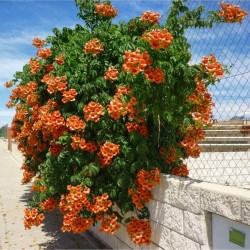
Trumpet vine or Trumpet...
Ár
1,95 €
(SKU: F 45)
Seeds Gallery EU,
5/
5
<!DOCTYPE html>
<html>
<head>
<meta http-equiv="Content-Type" content="text/html; charset=UTF-8" />
</head>
<body>
<h2><span style="font-size: 14pt;"><strong>Trumpet vine or Trumpet creeper Seeds (Campsis radicans)</strong></span></h2>
<h2><span style="color: #ff0000; font-size: 14pt;"><strong>Price for Package of 20 seeds.</strong></span></h2>
<p>Campsis radicans (trumpet vine or trumpet creeper, also known in North America as cow itch vine[citation needed] or hummingbird vine[citation needed]), is a species of flowering plant of the family Bignoniaceae, native to the eastern United States and naturalized in parts of the western United States as well as in Ontario, parts of Europe, and scattered locations in Latin America. Growing to 10 m (33 ft), it is a vigorous, deciduous woody vine, notable for its showy trumpet-shaped flowers. It inhabits woodlands and riverbanks, and is also a popular garden subject.</p>
<p><strong>Description</strong></p>
<p>The leaves are opposite, ovate, pinnate, 3–10 cm long, and emerald green when new, maturing into a dark green. The flowers come in terminal cymes of 4–12, orange to red in color with a yellowish throat, and generally appear after several months of warm weather.</p>
<p><strong>Ecology</strong></p>
<p>The flowers are very attractive to hummingbirds, and many types of birds like to nest in the dense foliage. The flowers are followed by large seed pods. As these mature, they dry and split. Hundreds of thin, brown, paper-like seeds are released. These are easily grown when stratified.</p>
<p>Etymology</p>
<p>The Latin specific epithet radicans means "with stems that take root".</p>
<p><strong>Garden history</strong></p>
<p>The flamboyant flowering of Campsis radicans made it obvious to even the least botanically-minded of the first English colonists in Virginia. Consequently the plant quickly made its way to England early in the 17th century. Its botanical parentage, as a hardy member of a mostly subtropical group, made its naming problematic: according to John Parkinson, the Virginia settlers were at first calling it a jasmine or a honeysuckle, and then a bellflower; he classed it in the genus Apocynum (dogbane). Joseph Pitton de Tournefort erected a catch-all genus Bignonia in 1700, from which it has since been extricated.</p>
<p><strong>Cultivation</strong></p>
<p>The vigor of the trumpet vine should not be underestimated. In warm weather, it puts out huge numbers of tendrils that grab onto every available surface, and eventually expand into heavy woody stems several centimeters in diameter. It grows well on arbors, fences, telephone poles, and trees, although it may dismember them in the process. Ruthless pruning is recommended. Outside of its native range this species has the potential to be highly invasive, even as far north as New England. The trumpet vine thrives in many places in southern Canada as well.</p>
<p>Away from summer heat, C. radicans is less profuse of flower. A larger-flowered hybrid 'Mme Galen' was introduced about 1889 by the Tagliabue nurserymen of Laniate near Milan.</p>
<p>The form C. radicans f. flava has gained the Royal Horticultural Society's Award of Garden Merit.</p>
</body>
</html>
F 45


Blue Rose Flower Seeds
Ár
2,50 €
(SKU: F 5)
Seeds Gallery EU,
5/
5
<h2><span style="font-size:14pt;"><strong>Blue Rose Flower Seeds a symbol of love</strong></span></h2>
<h2><span style="color:#ff0000;font-size:14pt;"><strong>Price for Package of 5 seeds.</strong></span></h2>
<div>A bouquet of blue roses is an unforgettable experiencefor your loved one. The most eye-catching and rarest flower is the blue rose. The most popular alternative to the traditional</div>
<div>red rose for romantic occasions, is the flower of varied shades of light blue. Large single blooms of the blue rose species as well as miniatures bushes are grown. Regal majesty and splendor symbolize the blue rose, thus the color blue traditionally associated with royal blood. The best source for these flower arrangements are usually online florists.</div>
<div>Differently colored roses have different meanings, so it is important to know just what signals you’re sending with your bouquet of flowers. The many colors of roses symbolize the wide range of human emotions. Common meanings are innocence, truth, purity, friendship, worship, mourning, jealousy, and a lot more.</div>
<div>Roses which are light blue in color are sometimes referred to as a lilac or lavender rose. The blue rose meaning and symbolism imply many things such as a statement of love at first sight as well as reaching for the unattainable. Blue roses have an air of mystery to their beauty.</div>
<div>One of the most memorable moments you can have with you loved one is to see their reaction after you order and have delivered them a bouquet of a dozen blue roses. These beautiful flowers will show them how much you care for and adore them. You can find available help in finding the perfect arrangement to convey the blue rose meaning from an online florist.</div>
<div>Blue Rose Bouquet</div>
<div>You don’t often see blue roses delivered but when you do they simply take your breath away. Nothing spells romance better than light or dark blue roses which create a lasting impression for the recipient. You would be hard pressed to find another flower which would have a greater impact than that of sending a blue rose.</div>
<div>The beauty of blue roses has beguiled people for hundreds of years. Nowadays a number of species of blue roses are cultivated, from Old Garden to modern hybrids. These include large, single-bloom flowers and small bushes with many blossoms. The types that have long stems are the most wanted for bouquets, and these carry the most symbolic substance for the blue rose meaning.</div>
<div>玫瑰</div>
<div>Scientific classification</div>
<div>Kingdom: Plantae</div>
<div>(unranked): Angiosperms</div>
<div>(unranked): Eudicots</div>
<div>(unranked): Rosids</div>
<div>Order: Rosales</div>
<div>Family: Rosaceae</div>
<div>Subfamily: Rosoideae</div>
<div>Genus: Rosa</div>
<div>Uses</div>
<div>Roses are best known for their flowers. Roses are popular garden shrubs, as flowering shrubs. They are also grown as cut flowers, as one of the most popular and commonly sold florists' flowers.</div>
<div>A few roses are grown for scented foliage (such as Rosa rubiginosa, ornamental thorns, Rosa sericea or their ornamental fruit Rosa moyesii).</div>
<div>Rose hips are occasionally made into jam, jelly, and marmalade, or are brewed for tea, primarily for their high vitamin C content. They are also pressed and filtered to make rose hip syrup. Rose hips are also used to produce Rose hip seed oil, which is used in skin products and some makeup products.</div>
<div>The leaves of most species are 5–15 centimetres long, pinnate, with (3–) 5–9 (–13) leaflets and basal stipules; the leaflets usually have a serrated margin, and often a few small prickles on the underside of the stem. The vast majority of roses are deciduous but a few (particularly in South east Asia) are evergreen or nearly so.</div>
<div>Symbolism</div>
<div>The rose has always been valued for its beauty and has a long history of symbolism. Roses are ancient symbols of love and beauty. 'Rose' means pink or red in a variety of languages (such as Romance languages, Greek, and Polish). The rose was sacred to a number of goddesses (including Isis and Aphrodite), and is often used as a symbol of the Virgin Mary. The ancient Greeks and Romans identified the rose with their goddesses of love referred to as Aphrodite and Venus. In Rome a wild rose would be placed on the door of a room where secret or confidential matters were discussed. The phrase sub rosa, or "under the rose", means to keep a secret — derived from this ancient Roman practice.</div>
<div>China</div>
<div>The China roses, based on Rosa chinensis, were cultivated in East Asia for centuries and finally reached Western Europe in the late 1700s. They are the parents of many of today's hybrid roses, and they brought a change to the form of the flower. Compared with the aforementioned European rose classes, the Chinese roses had less fragrant, smaller blooms carried over twiggier, more cold-sensitive shrubs. Yet they possessed the amazing ability to bloom repeatedly throughout the summer and into late autumn, unlike their European counterparts. The flowers of China roses were also notable for their tendency to "suntan," or darken over time — unlike the blooms of European roses, which tended to fade after opening. This made them highly desirable for hybridisation purposes in the early 1800s. According to Graham Stuart Thomas, China Roses are the class upon which modern roses are built.[7] Today's exhibition rose owes its form to the China genes, and the China Roses also brought slender buds which unfurl when opening. Tradition holds that four "stud China" roses ('Slater's Crimson China' (1792), 'Parsons' Pink China' (1793), and the Tea roses 'Hume's Blush Tea-scented China' (1809) and 'Parks' Yellow Tea-Scented China' (1824)) were brought to Europe in the late eighteenth and early nineteenth centuries; in fact there were rather more, at least five Chinas not counting the Teas having been imported.[8] This brought about the creation of the first classes of repeat-flowering Old Garden Roses, and later the Modern Garden Roses. Examples: 'Old Blush China', 'Mutabilis' (Butterfly Rose), 'Cramoisie Superieur'.</div>
<div>① Put seeds into 40° C water for 24 hours.</div>
<div>② Put seeds into very wet sands for germination. ( Generally it take more than 40 days. )</div>
<div>③ Move it into soil after it sprouts.</div>
<div>Germination temperature: 20-25℃</div>
<div>Germination time: 40 days</div>
<div>Growth optimum temperature: 10-25 ℃</div>
<div>Spacing : 20 * 20cm</div>
<div>Rose on soil not ask for much, just with some humus soil aggregate</div>
<div>structure be good training as long as the following three links will make good growth: </div>
<div>
<p>Rose is afraid of:</p>
</div>
<div>① Rose is drought tolerant plants, but it is afraid floods. It is necessary use non-glazed bonsai pots of soil cultivation. The principle is "do not pour water on it when soil is not dry. Wet it completely when you pour water on soil."</div>
<div>② Lend a high concentration of fertilizer (especially fertilizers) will result in the death of local rot.</div>
<div>③ All plants need sunlight. Rose like sunshine too.</div>
<div>Note: </div>
<div>1. Please seeds stored in a cool, dry place. </div>
<div>2. The seed surface is 1-2 times the diameter of the seed.</div>
<div>3.Our seeds are very easy to cultivate and the survival rate is very high. </div>
<div>Cover seeds with preservative films,and then,piercing the films to make several holes. Keep seeds covered in the daytime and uncover it in the night. Take off the preservative films when the seeds are half-germinated. The plant will be in a state of dormancy in summer and the leaves will turn yellow. Begginers should better use sand to cultivate the seeds.although the seeds will grow slower in the sand,the plants will be the most vigorous in the future. If you tend to use other kind of soil, try to use the kind with good water permeability,for example,the clay would not be a good choice. The soil should be disinfected by microwave oven before been used. Pay attention:the surface of the soil not be too dry, which is very important. When watering,all the soil should be wetted and there is no need to water in a cloudy day. </div>
<div>The pot could be 6-8cm in depth,it be an earthen basin or a plastic one. The volume of the soil should keep a distance of 1-2cm from the rim of the pot.</div>
<p><em><strong>More : http://en.wikipedia.org/wiki/Blue_rose</strong></em></p>
F 5


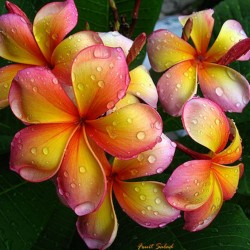
Plumeria Seeds ORANGE KARASIN
Ár
9,95 €
(SKU: F 8 OK)
Seeds Gallery EU,
5/
5
<h2><span style="font-size: 14pt;"><strong>Plumeria Seeds "Orange Karasin" Flowers</strong></span></h2>
<h2><span style="color: #ff0000; font-size: 14pt;"><strong>Price for Package of 4 seeds.</strong></span></h2>
<div>
<p>Plumeria (Frangipani) also known as the Lei flower, is native to warm tropical areas of the Pacific Islands, Caribbean, South America and Mexico. They can grow to be large shrubs or even small trees in mild areas of the U.S. In tropical regions, Plumeria may reach a height of 30' to 40' and half as wide. Their widely spaced thick succulent branches are round or pointed, and have long leather, fleshy leaves in clusters near the branch tips. Leaves tend to fall in early winter since they are deciduous and sensitive to cold. </p>
</div>
<div>
<p>In colder climates plumeria should be grown in containers. They make beautiful potted plants for the patio or greenhouse. However, in milder climates, plumeria can be grown outdoors in the ground, where they make a small beautiful landscape trees. When temperatures dip into the low 40's they may be stored in their containers or uprooted carefully trying to take as much root as possible and stored over winter in a heated basement or garage where temperatures are kept above freezing. As soon as temperatures rise outdoors they can be brought out and planted again. They will resume growth, leaf out and begin to grow as if nothing happened.</p>
</div>
<div>
<p>The real payoff comes during the early summer through the early fall months, when very fragrant clusters of showy, waxy flowers provide the makings for your own Hawaiian Lei. There is absolutely nothing like the sweet fragrance of Plumeria in flower, with fragrances of jasmine, citrus, spices, gardenia, and other indescribable scents. These flowers are treasured by the Polynesian Islanders for their durability, fragrances and colors of whites, yellows, pinks, reds, and multiple pastels. </p>
</div>
<div>
<p>Flowering can last up to 3 months at a time producing new blooms everyday. Once picked, a bloom can last for several days without wilting if kept in water.</p>
</div>
<div>For container planting use a coarse, well draining potting soil, such as cactus mix or potting mix with perlite and sand. Start with a 6" to 10" container or you may consider using a large container on a plant dolly once the plant is large enough to be in a larger pot to help make the job easier moving indoors as winter approaches. Insert the cut end down into the potting mix about 2 inches. Firm the soil around the cutting and water thoroughly.</div>
<div>Water Plumerias deeply, but infrequently, let soil dry out somewhat before watering again. Begin to reduce the frequency of watering in mid-October, as the cool season approaches. Stop watering after all the leaves have fallen and the plant has gone dormant. Resume watering in the spring as new growth begins.</div>
<div>Plumerias should be fed with a high nitrogen fertilizer beginning in spring when growth begins. To encourage the most blooms a switch to a high phosphorous fertilizer in early May and fertilize every 2 to 3 weeks through the end of August. </div>
F 8 OK

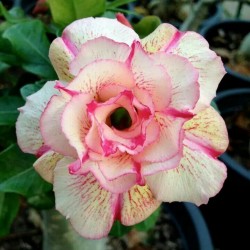
Adenium Obesum Seeds 'Angle'
Ár
1,95 €
(SKU: T 23 A)
Seeds Gallery EU,
5/
5
<!DOCTYPE html>
<html>
<head>
<meta http-equiv="Content-Type" content="text/html; charset=UTF-8" />
</head>
<body>
<h2>Adenium Obesum Seeds - Desert Rose 'Angle'</h2>
<h2><span style="color: #ff0000;">Price for Package of 5 seeds.</span></h2>
<div>
<p>Adenium Obesum or Desert Rose (Apocynaceae family) is a species of spectacular succulent native to tropical Africa and Arabia. The plant is a spreading succulent bush, two meters in height, with a thick, fleshy, twisted globose base that tapers gradually upwards, may be rigid and upright, with rather weak and spreading, short branches. The leaves are fleshy deciduous, crowded at the top of the branches. The curious form of the plant is further enhanced by some of the showiest flowers of all succulents, often borne in masses over a long season. The flowers are pale pink to deep red on the petal margins, always fading to near white towards the throat. The throat (floral tube) is white, sometimes with faint red nectar guide. The flower size averages about 6-7 cm (two inches) in diameter, but this is quite variable among clones. The Adenium is well adapted for growing in pots. Young plants of this variety have a small, ovoid caudex (woody base), and old specimens have large caudexes. Old plants, without any training, look like a bonsai.Despite their beauty and ease of culture, Adeniums are not nearly as popular as one might expect. Perhaps they simply haven't received the exposure they deserve. Adeniums are drought-enduring and can survive for two months or more without being watered. Over flooding of the pot while watering may lead to rotting of the stem base and roots.</p>
</div>
<div>Sowing instructions</div>
<div>Propagation: Seeds / Cuttings</div>
<div>Pretreatment: 0</div>
<div>Sowing Time: year round</div>
<div>Sowing Depth: 0.5 cm</div>
<div>Sowing substrate: Kokohum or sowing mix + sand or perlite</div>
<div>Sowing temperature: 20-25 ° C</div>
<div>Sowing Location: bright + keep constantly moist not wet</div>
<div>Germination: 2-4 Weeks</div>
<div>Fertilizing: weekly 0,2% or slow-release fertilizer</div>
<div>Pests: Spider mites> especially under glass</div>
</body>
</html>
T 23 A

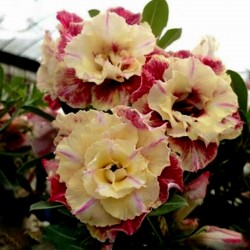
Adenium Obesum Seeds "Lemon...
Ár
2,90 €
(SKU: T 23 LP)
Seeds Gallery EU,
5/
5
<h2><strong>Adenium Obesum Seeds - Desert Rose 'Lemon pink'</strong></h2>
<h2><span style="color: #ff0000;"><strong>Price for Package of 5 seeds.</strong></span></h2>
<p>Adenium Obesum or Desert Rose (Apocynaceae family) is a species of spectacular succulent native to tropical Africa and Arabia. The plant is a spreading succulent bush, two meters in height, with a thick, fleshy, twisted globose base that tapers gradually upwards, may be rigid and upright, with rather weak and spreading, short branches. The leaves are fleshy deciduous, crowded at the top of the branches. The curious form of the plant is further enhanced by some of the showiest flowers of all succulents, often borne in masses over a long season. The flowers are pale pink to deep red on the petal margins, always fading to near white towards the throat. The throat (floral tube) is white, sometimes with a faint red nectar guide. The flower size averages about 6-7 cm (two inches) in diameter, but this is quite variable among clones. The Adenium is well adapted for growing in pots. Young plants of this variety have a small, ovoid caudex (woody base), and old specimens have large caudexes. Old plants, without any training, look like a bonsai. Despite their beauty and ease of culture, Adeniums are not nearly as popular as one might expect. Perhaps they simply haven't received the exposure they deserve. Adeniums are drought-enduring and can survive for two months or more without being watered. Over flooding of the pot while watering may lead to rotting of the stem base and roots.</p>
<div>Sowing instructions</div>
<div>Propagation: Seeds / Cuttings</div>
<div>Pretreatment: 0</div>
<div>Sowing Time: year round</div>
<div>Sowing Depth: 0.5 cm</div>
<div>Sowing substrate: Kokohum or sowing mix + sand or perlite</div>
<div>Sowing temperature: 20-25 ° C</div>
<div>Sowing Location: bright + keep constantly moist not wet</div>
<div>Germination: 2-4 Weeks</div>
<div>Fertilizing: weekly 0,2% or slow-release fertilizer</div>
<div>Pests: Spider mites> especially under glass</div><script src="//cdn.public.n1ed.com/G3OMDFLT/widgets.js"></script>
T 23 LP





